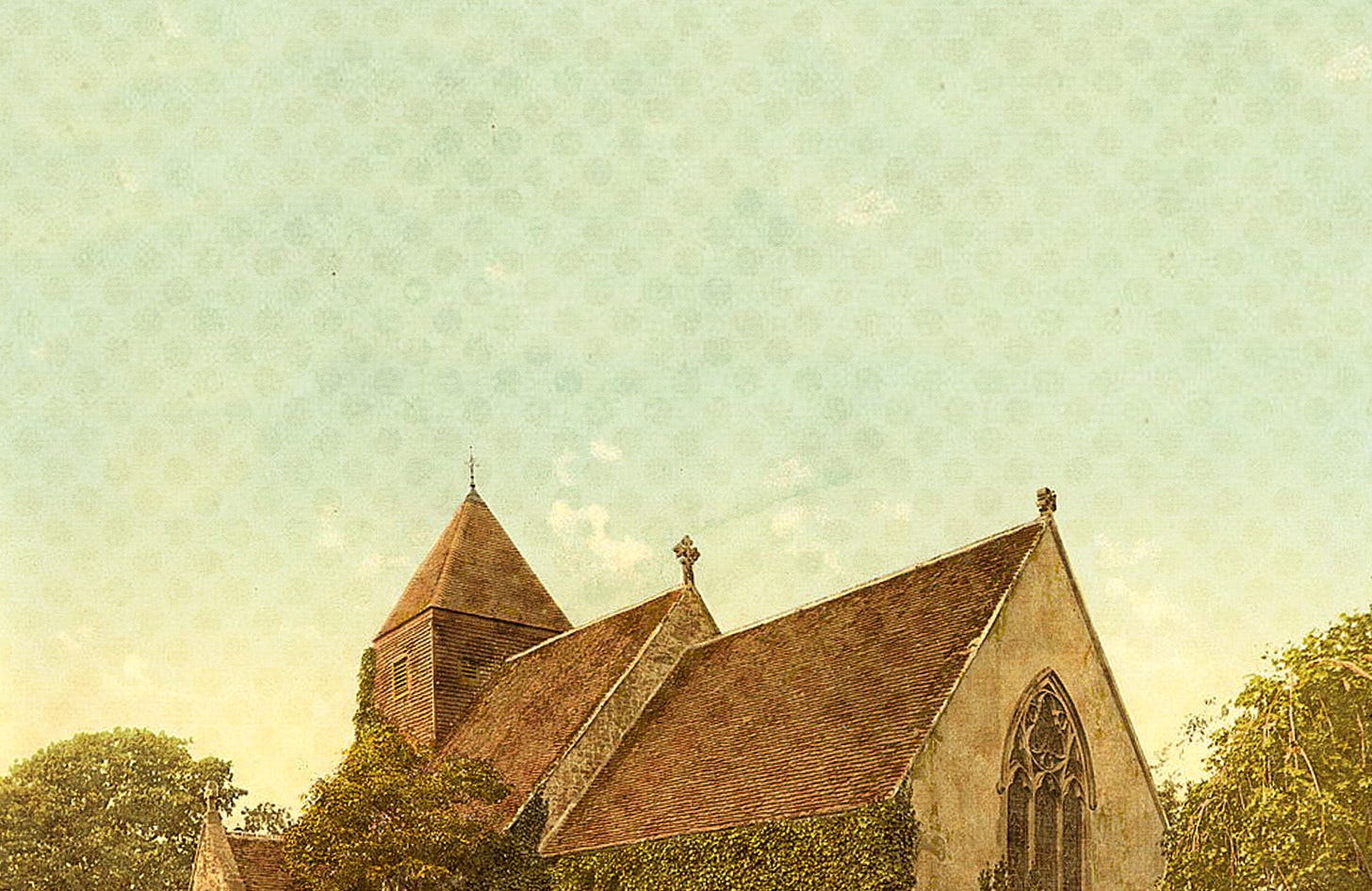Every life has seasons of massive tectonic drift when things seem to unfasten from weakened anchors and re-orient toward something unexpected. It happened for me when I first believed in God and again when I abandoned one career for another. Another time (or two) I fell in love. I remember some of these astonishing shifts as happy, some as tragic, but all as revolutionary. These are liminal times, when an old thing has gone but a new thing has not yet begun. Liminal seasons are vulnerable and formative. They are the hinges upon which the trajectories of our lives turn. Most of the time the soft clay of the in-between hardens to a permanent cast, and what began as a breathless adventure transforms into another mundane reality. But other liminal seasons are interludes—a spiritual retreat or a whirlwind romance, for instance. These are temporary but absolute. Untarnished, they remain suspended in memory with enduring freshness and precision. Such is Tom Birkin’s month in the country.
Birkin arrives in the Yorkshire town of Oxgodby a broken man. A veteran of the Great War, he is marked by a spasmodic facial twitch from an injury sustained at the gruesome battle of Passchedaele, one of the highest-casualty military engagements in the history of war. Like many veterans of his day, he is poverty-stricken, transient, and traumatized, suffering from a cluster of combat trauma symptoms, including insomnia, flashbacks, nightmares, and social withdrawal. Recently abandoned by his straying wife, Birkin has no money, no prospects, no home, and no community. All Tom Birkin has is the scarce contents of his kitbag and a temporary contract to restore a white-washed mural in a country church in rural Yorkshire. However, as he settles into his task, he discovers a rich and vibrant life in the little village. His weeks in Oxgodby take on the quality of convalescence. In this liminal time and space, his divided soul begins to heal.
But healing never happens in a vacuum. Time does not, in fact, heal all wounds. Time is too abstract to heal anything. Instead, there are always embodied and particular conduits of healing. Any person, or character in a story, dwells within rings of three concentric circles. Each individual Self exists in the smallest, innermost circle, surrounded and enclosed by a larger circle that is the communal Society with its normative way of life, surrounded still further out by the cosmological, or Spiritual, circle that is the realm of ultimate realities, or “permanent things” as G.K. Chesterton called them—love, death, suffering, faith, justice, and the like. Like every great soul, every great story encounters all three circles within its narrative arc. At the beginning of the novel, Tom believes himself to be irrevocably broken as an individual Self, permanently outcast from his surrounding Society, and utterly disconnected from any unifying Spiritual reality. But his embodied, particular experience in Oxgodby begins to knit his divided soul back together through meaningful work, engaged relationships, and honorable action.
Keep reading with a 7-day free trial
Subscribe to Close Reads Podcast HQ to keep reading this post and get 7 days of free access to the full post archives.






